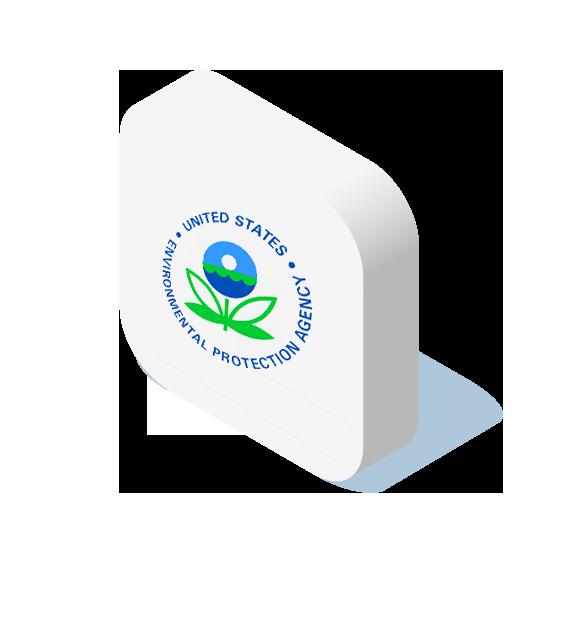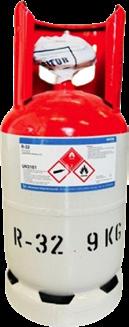

Global market shift and regulatory drivers
The global refrigeration industry is undergoing a structural shift as the phase-down of high-GWP hydrofluorocarbons (HFCs) accelerates under international agreements such as the Kigali Amendment and EU F-gas Regulation. By 2030, the EU aims to reduce HFC consumption by 95% compared to 2015 levels, effectively eliminating many commonly used refrigerants such as R-404A and R-507A.
At the same time, supply chain volatility and elevated costs for legacy HFCs have accelerated the transition, making low-GWP refrigerants such as R-1234yf, R-32, and natural options (CO₂, R-290, R-1270) the dominant industry solutions for new builds and retrofits in 2025. Key industry players have begun large-scale rollouts of next-generation refrigeration equipment that uses low GWP refrigerants to ensure regulatory conformance, future-proof fleets, and optimize operating cost.
Classification of flammable refrigerants
A2L refrigerants are classified under ISO 817 and ASHRAE Standard 34 as low toxicity (A) and lower flammability (2L) substances. They are engineered to provide the efficiency and stability of HFCs with a fraction of their GWP, typically below 750.
ASHRAE Standard 34Basis of Standard Safety Group Classifications
A2L refrigerants, such as R-32 and R-1234yf, belong to a specific subgroup within the A2 flammability band, defined by low burning velocity (BV) and high lower flammability limits (LFL). These characteristics significantly reduce the likelihood of flame propagation, which is why A2Ls are commonly referred to as “mildly flammable” refrigerants. In practical terms, this classification indicates that while they are not entirely nonflammable, they are considerably more difficult to ignite compared to higher-risk refrigerants such as propane (R-290) or butane (R-600). Their controlled flame characteristics make them a preferred choice in modern HVAC systems balancing safety, efficiency, and environmental performance.
For ignition to occur, a relatively large amount of refrigerant must mix with air (high LFL), and even then, a strong ignition source is needed. For example, a lit match or a small electrical spark in a well-ventilated area is unlikely to ignite an A2L leak, especially compared to A3 refrigerants.In controlled tests, A2L refrigerants burn slowly and produce less heat, making accidental ignition in real-world marine environments rare, provided good ventilation and safe work practices are maintained. However, in confined or poorly ventilated spaces, the risk increases, so proper detection, ventilation, and crew training remain essential.
ASHRAE Standard 34 classifies flammability based on three criteria:
1. Minimum quantity of refrigerant needed in air to ignite (Lower Flammability Limit, LFL)
2. Burning velocity (BV)
3. Heat of combustion (HC)
*A2L and B2L are lower flammability refrigerants with a maximum burning velocity of ≤ 3.9 in./s (10 cm/s).

What equipment and tools are suitable for A2L refrigerants (CE vs
ATEX)
When it comes to the handling of A2L and other flammable refrigerants, there is a notable lack of clear, globally mandated requirements. Most developed regions, particularly the EU, promote “safe handling practices” through professional training and guidance, but these are typically recommendations rather than enforceable regulations, though they remain critically important.
It’s important to note that these regulations focus on the use of equipment with flammable refrigerants, specifying the necessary tests and safety features to ensure safe operation. This is distinct from ATEX requirements, which pertain to the operating environment rather than the equipment itself.
Specific legal requirements govern equipment used with A2L refrigerants.
For example, the EU’s CE Low Voltage Directive (LVD) 2014/35/EU references IEC 603352-104, a standard that directly addresses the safety requirements for recovery units handling flammable refrigerants.

In the US, EPA regulations for the automotive industry reference several UL standards and ANSI/ISA 12.12.01.
Other regions may not have their own dedicated regulations but often adopt or reference these international standards.


Testing protocols for equipment are similar across refrigerant classes, but as flammability increases (e.g., from A2L to A3), components may need to be upgraded. Terms like “spark free” or “sparkless” are often used in the industry, but they lack precise definitions in recognised standards and can be misleading. Instead, compliance with established standards should be prioritised.
Generally, these terms imply that, under normal operation, no exposed sparks are generated, or that sparking components are sealed, most commonly referring to switches and contacts.
Best practices for safe implementation
1. Equipment Standards
Implementing A2L and other low-GWP refrigerants in marine environments requires a robust approach to safety, compliance, and operational reliability. Vessel operators should ensure that all equipment used with flammable refrigerants meets relevant standards, such as the CE mark in Europe, and applicable UL and EPA requirements in the US. Regular maintenance checks must be conducted to ensure system integrity and performance.
2. Safe Handling and Crew Training
Safe handling practices are essential, even in non-hazardous environments where A2L equipment is typically used. Crew members must receive specialised training in the handling, storage, and servicing of flammable refrigerants. Training should also cover the use of gas detection equipment and ventilation requirements to reduce risks during maintenance and operations.
3. Emergency Response and Incident Management
Clear procedures should be established for emergency response, leak detection, and incident reporting. Work areas must be clearly marked, and access restricted during maintenance activities involving flammable refrigerants.
4. Documentation and Compliance Assurance
All safety checks, refrigerant charging and recovery records must be thoroughly documented. This ensures compliance with regulatory requirements and demonstrates adherence to industry best practices during audits or inspections.
Strategic application
Leading manufacturers are actively retrofitting and designing equipment to accommodate these next-generation refrigerants, ensuring operational reliability and environmental responsibility at sea. As refrigerant selection becomes increasingly pivotal to vessel performance and sustainability, marine stakeholders must remain agile, informed, and proactive in adopting solutions that balance safety, efficiency, and compliance with the latest standards.
Examples in the market
R-1234yf
is gaining traction in transport refrigerated containers (reefers) due to its ultra-low GWP and manageable flammability. Manufacturers have begun offering both new and retrofit reefers compatible with R-1234yf.
Looking ahead

R-32
is being adopted in smaller refrigeration and air conditioning units, offering a balance of performance and environmental compliance such as the F-gas regulation and Montreal Protocol.

The transition to A2L refrigerants is a chance to future-proof shipboard systems against rising costs, limited refrigerant supply, and tightening climate mandates. Early adopters are already demonstrating that with proper engineering controls and training, A2L refrigerants can deliver safe, efficient, and compliant operations at sea.
As classification societies expand acceptance standards and IMO frameworks evolve, the industry’s proactive engagement today will define its environmental and operational resilience tomorrow.


